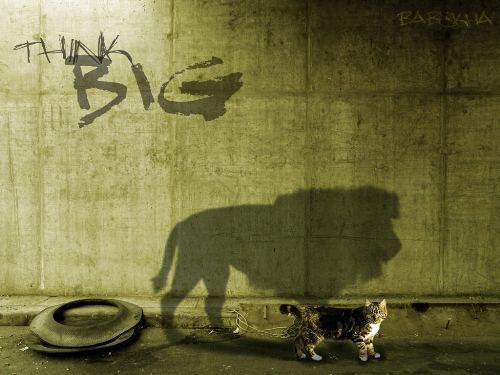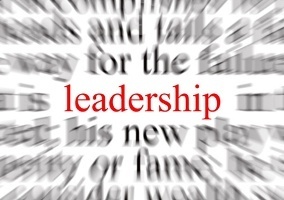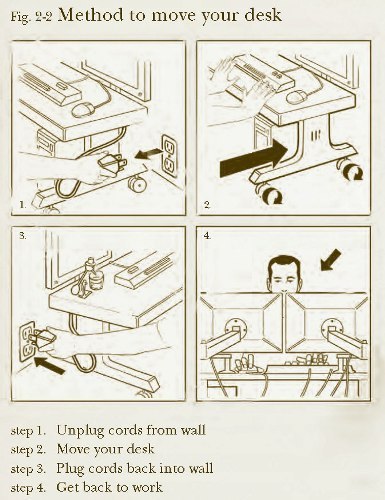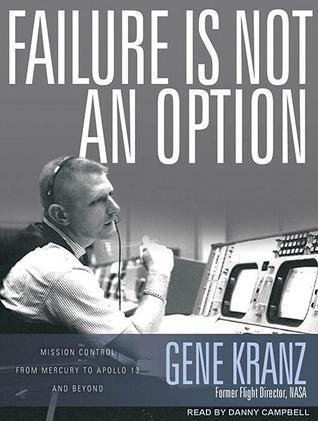Jeremie Averous's Blog, page 150
June 9, 2012
How “thinking big” is so useful as an entrepreneur
Before I really started to build my own company I read all this motivational literature about “thinking big”, and I thought it was a bit borderline BS…
It is not that I did not know about ambition or wanting (dreaming) to build big things, but I did not really understand what was meant.
Then I happened to read some books by Michael Port as I started my company and I found he really insisted on this concept. True enough when I looked at it with the eyes of an entrepreneur I understood that he meant looking at one’s creation taking into account from the onset, what shape it should have when it is big. Not limiting oneself by thinking ‘it’s just a one-man show operation at the moment and it should feel, smell and look like it, we’ll see later’.
So I worked on my vision for my company, on my niche, how I would like to grow it internationally with small consulting offices in many countries offering high-level advice. And even if it is a one-man show at the moment (and soon a two-men show) I have already taken into account this future growth in the way I organize things. My new partner’s external job title is ‘Manager South-East Asia’. Not that he’ll manage a lot yet. But because I am following my “think big” idea.

think big
The most amazing thing is by behaving as the head of a large consulting company, by having a “think big” approach to our website, documentation and intellectual property, people and clients do react as if we were really already a large, established company! And it just snowballs. We’re just a little kitten and they see the shape of the lion.
The way you believe in your dream shapes the way you behave and ultimately, how people react to it.
Believe big. When do you start?
Nice image by Babekha.

June 7, 2012
The TEAM COACH, the Fourth Project Soft Power Role
The successful project leader is like the familiar figure of the collective sports TEAM COACH.

Project Soft Power: the Team Coach role
His leadership approach can potentially transform a team from a mere collection of individuals into an unstoppable team. He can lead the team to produce results that could not have been achieved without the special teamwork approach and the specific practices he implements, leveraging the capabilities of each team member into an incredible collective capability.
The magical aspect of the successful team coach is only the persistent, disciplined application of a limited number of key practices. Done well, it can unleash incredible potential. It can move a team from good to great even if the members are not stars.
One good example is Barcelona football club vs Real Madrid. Barcelona is a team that invests heavily in the training and growing of young talents, and has a definite strength in its collective game. On the contrary, Real Madrid invests heavily on expensive divas and not so much in a training school. Bet who has got the most consistent results?

Pep Guardiola Barcelona team coach gives feedback to Messi
And as the behavior of the team coach Pep Guardiola is both supportive but also sometimes assertive. One of the skills of the successful team coach is the capability to give honest and have tough conversations with his team members.
The Team Coach role is about creating an effective team, a team that will be successful and keep momentum and cohesion when facing the odds against the project. The successful Project Leader knows how to create a diverse team, and foster its development by allowing roles to evolve, and people that don’t fit to leave the team. The Project Leader also knows when and how to have tough conversations with team members when needed.
How good are you as a team coach?
Project Soft Power is now released to the world!
Project Soft Power on Amazon.com and Kindle

June 5, 2012
Why leadership practice will never be the same again: the Fourth Revolution at work
The Fourth Revolution transforms fundamentally the practice of leadership. Even if leadership has been refined as a concept only since the 1980′s, it has transformed surreptitiously since. Leadership just does not imply the same behavior and tools.

What is the meaning of leadership ?
Why? Simply, because leadership is about building relationships. And the way we are building and maintaining relationships has changed dramatically with the Fourth Revolution.
In the Industrial Age, where Broadcasting was ubiquitous but 2-way communication scarce, organizations have defined a leadership mainly built on broadcasting. Communication systems and channels were put in place; the effectiveness of the broadcasting media evaluated afterwards and the message adapted in the next iteration. There was always a large distance between the leader and the follower, enhanced by a number of intermediaries and systems.
Today, instantaneous 2-way communication transforms the relationship. The distance between the leader and the follower has been dramatically reduced. Leaders need to demonstrate reactivity and genuineness. Leaders need to demonstrate willingness to exchange. Feedback on the leader’s communication is immediate. At an organizational or personal level, authentic presence is required.
Today, leadership cannot rely any more on systems. Human authenticity is key.
Remember, “leadership is a relationship between those who aspire to lead and those who choose to follow” (Kouzes and Posner). People today are faced with far more leadership choices. To make it, a leader needs to be present and authentic.
When will our institutions stop focusing on a conventional, Industrial Age leadership of controlled messages and distance to the followers? Let the new Collaborative Age develop their tribe through human touch and connection!

June 2, 2012
The power of crowdfunding, illustrated. Again. When will you change the world too?
For those of you who have been interested by the adventure of Amanda Palmer on Kickstarter (see How Crowdfunding redefines the future of Creation for million of artists), I just had a glimpse of her campaign’s result which just closed end May.

Amanda Palmer and the future of creation
Have a look at Amanda’s kickstarter page. She had an objective to raise 100,000$.
Ready?…
Sure?…
Are you seated?…
She raised 1,192,793$. In less than 2 months.
She’ll do her compelling project, probably much more and most certainly we’ll hear about her in the future with some new, amazing, awesome projects.
No label, no publisher (which she dumped two years ago). Just the power of the crowd. People voted with their wallets.
Let’s look at the stats: 24,883 backers contributed an average of 48$ each. Out of them 11,100 contributed less than 5$. 20,500 contributed less than 25$. Ouch! Isn’t that democracy? Don’t you have 5$ to spend to support an artist you love??
I’m sure you want to change the world too. When will you leverage the power of the crowd for your project, and stop waiting for somebody else to decide whether what you are doing is right?

May 31, 2012
The ENTREPRENEUR, the Third Project Soft Power Role
Following the SPIDER and the KUNG FU MASTER, the ENTREPRENEUR role is particularly important when it comes to large, complex endeavours.

Project Soft Power: the Entrepreneur role
It might at first seem contradictory, because a project is fundamentally a short term endeavour: still, the successful project leader is fundamentally an Entrepreneur, because he builds something, even if it is temporary. He builds his project as a vehicle to reach certain objectives. Obsessed by his objectives, he is able to postpone short term gains for longer term benefits; he is able to take (reasoned) risks.
The Entrepreneur mindset is often the key distinction between the successful Project Leader and the average project manager.
It is amazing how many organizations have difficulty to accept that sometimes, upfront investment is necessary to reach longer term goals, at least when it comes to investing in people, processes and systems.
The Entrepreneur role is about being able to invest early to reap larger benefits tomorrow. While it entails a certain dose of uncertainty, this practice allows the successful project leader to reap the fruits of appropriate early decisions. It is essential for ultimate the project success, yet so unfamiliar to most organization’s cost cutting cultures.
How entrepreneurial are you really in your day-to-day work?
Project Soft Power is now released to the world!
Project Soft Power on Amazon.com and Kindle

May 29, 2012
Obstacles on your road are there for a reason. Are you ready for them?
“Obstacles are those frightful things you see when you take your eyes off your goal”
This quote is by Henry Ford. And I find it quite deep and powerful when considered carefully.

An obstacle on your road?
Henry Ford was a determined person. He spent years battling against the patent for “automobiles” that was held by a ‘patent troll’ – as we would say today – who tried to maintain scarcity. He wanted to be able to provide affordable cars to more people; and he eventually won after years of legal procedures.
He does not deny that obstacles can look frightening and difficult. He just states that if we have a strong goal, we’ll always find a way.
An other thinker, Randy Pausch, in his famous “last lecture“, did a statement that is for me fundamental:
“The brick walls are there for a reason. The brick walls are not there to keep us out. The brick walls are there to give us a chance to show how badly we want something. Because the brick walls are there to stop the people who don’t want it badly enough. They’re there to stop the other people.”
So, obstacles are not just here to test your commitment, they are also here to make the different with those that are not passionate enough to persevere.
So, remember next time you moan or you’re scared because of some obstacle: did you take your eyes off your goal? Is your goal clear and compelling enough?
Will you work to overcome that obstacle, which will make the difference between you and the other wannabes?

May 26, 2012
Get a glimpse in how the organization of the Collaborative Age will work, today!
Once upon a time there was a company that had no boss. There were quite more than 100 people in the office, and they just organized themselves fluidly around temporary projects: who has the best idea got the support of others.

Extract from Valve Employee Handbook
Desks had wheels so that project teams can join spontaneously. Just unplug, replug, and there you could work next to your new buddy.
Failure was accepted as a learning opportunity and very quickly, new hires worked directly on the main products where they could wreck havoc so easily!
Employee evaluation was based on peer evaluation; a constant stream of feedback was organized to each employee from the feedback of peers; and even salary increments were based on a peer-review ranking.
Do you think this company exists in another galaxy or is just in the Fourth Revolution’s author imagination? No, it’s a company called Valve and its employee handbook is accessible here. Get a glimpse of how the workplace of the future will look like, it is absolutely eye-opening! A real MUST-READ!
Also stroll on the company website, where all current employees are displayed alphabetically. Even the founder, Gabe Newell, is just listed there as any other employee.
Brace yourself because the workplace is going to look more frequently like that: we will be expected to take initiatives in an unstructured environment and let our contribution shine in the eyes of the others. No more boss, no more instructions. Pure initiative, pure entrepreneurship.
Are you ready for the Fourth Revolution in organizations?
The link to Valve’s employee handbook was originally in a blog post by Seth Godin with various other useful references.

May 24, 2012
VIDEO OF THE QUARTER: Kevin Kelly on the next 5,000 days of the web
In this stunning video from TED, Kevin Kelly describes the revolution of the last 5,000 days of the Web and what is coming in the next 5,000 days. Knowing that the video was shot in 2007 we can already see some predictions coming true!
Fasten your seat belts, the world is now changing amazingly!
How the web will become a ONE machine and we will all be the ONE. How in 2040, the processing capability of the web will exceed the combined processing power of 6 billion individuals. And more insight about the tremendous changes that are happening in the world!

May 22, 2012
BREAKING NEWS: my new book, Project Soft Power, is published!
Miracle of the Fourth Revolution, my new book is now out to the world even before I have received the copies from the local printer!
It took less than 10 days to get the title setup on LightningSource and disseminated to all e-bookshop worldwide!!
And I can now announce also the launch of the Project Soft Power website where you can know more about the Project Soft Power concept, find extracts of the book…
Can’t wait? Here are some links to buy the book. Enjoy!
and on Kindle

May 19, 2012
When is failure an option?
I visited Houston Space Center the other day as I was stranded a week-end in town during a business trip. There you can visit one of the famous space control rooms, view a Saturn rocket, many spaceships and a bunch of memorabilia about the space conquest (exciting for the child in you!). And you can’t escape this famous quote attributed to Gene Kranz, the flight director on Apollo 13: “Failure is not an option“, written on everything – books, mugs and T-shirts included.

When is failure an option?
Quite a tough guy, this Gene Kranz, and undoubtedly his determination helped much bring the astronauts back on earth that time.
But then today we know that we should fail often to progress, at least limited failures. So, when is failure an option? And when is it not an option?
When should one persevere, against all odds, and when should one not?
One of the few references on this topic is a little book by Seth Godin called “the Dip“. It discusses how all ventures always go through a dip between the initial excitement and the possible future development. How can we recognize whether that’s a temporary dip or a slide toward failure? How can we recognize whether we need to persevere? How can we recognize that in that case, failure is not an option?
When Apollo 13 encountered its issues, the purpose of the team was clear: bringing the people back to Earth. They did not know how but the purpose was set, compelling, tangible, emotional, generous. They would do whatever it took to reach it. And they did.
Failure is not an option when the purpose is so compelling that it will move you to do anything to reach it. Don’t get stuck on the way you thought you would take, though; you’ll need to find the way, and it won’t be obvious. And you will find the way, because you will have small failures along the journey, overcoming and learning from them to get closer to your goal.
Failure is not an option for your life purpose. It is certainly an option for helping you find the way to reach it. This is quite a vital distinction.
Test what you identified as your life purpose: is failure is an option?





